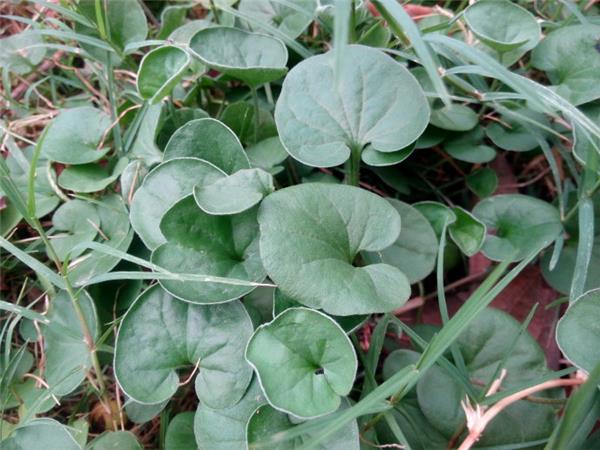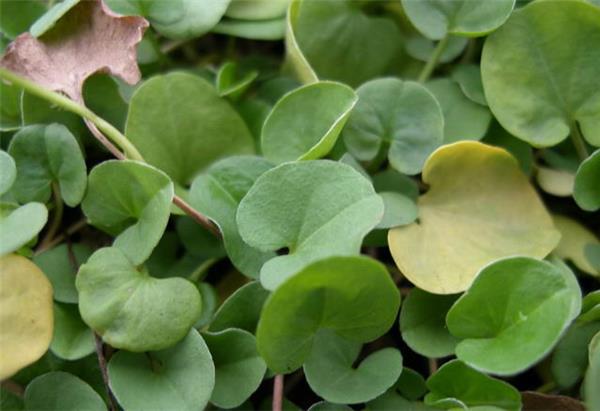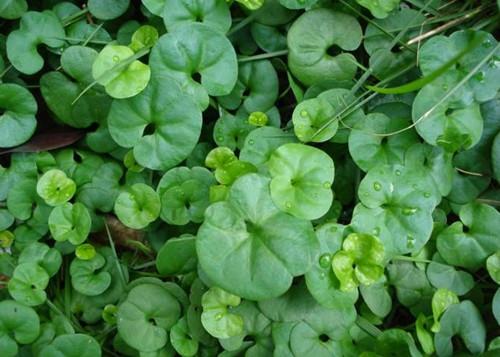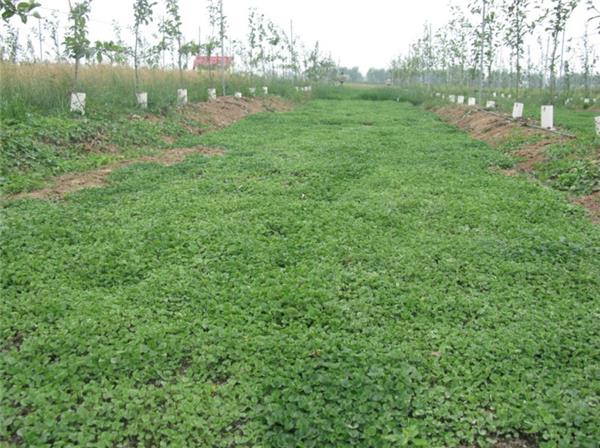How does the water feed the horse?
Can Dichondra repens be raised in water? Dichondra, also known as American Dictyledon, is a dicotyledonous turfgrass, belonging to the family Convolvulaceae, horseshoe metal perennial herbs. It has wide adaptability, well-developed fibrous roots, more stolons, rooting at internodes and can form a dense ornamental lawn.

The stolon of Dichondra repens grows rapidly and has strong invading ability under the condition of suitable humidity. All these determine its resistance to extensive management. However, like other turfgrasses, there are also some maintenance difficulties in Dichondra lawn. The problems encountered in the maintenance of Dichondra lawn mainly include weed control, disease control, pest control and rational fertilization.
Can Dichondra repens be raised in water?
Can't.

Planting techniques of Dichondra repens
The dwarf leaf of Dichondra repens is thin, the leaf is neat and graceful, the leaf color is beautiful, no pruning is needed, the growth speed is fast, and the formation time is short. The leaves of Dichondra repens are not withered and yellow at-8 ℃. Heat-resistant, the leaf color remains bright green when the temperature reaches 38 ℃. It is also resistant to moisture, shade and strong reproductive ability, the green period is more than 300 days, and remains green almost all the year round. But it is not resistant to drought or trampling. According to relevant statistics, per square meter of Dichondra can absorb 35.7 grams of carbon dioxide per day. The whole herb of Dichondra repens can be used as medicine, can clear heat and dampness, and has the function of detoxification and detumescence. Here is a brief introduction to the cultivation methods.
The stem node of Dichondra repens has a strong ability of regeneration, each node can take root and sprout, strong creeping ability, rapid reproduction and rapid growth. Whether it is breeding and field planting, the soil should be prepared in advance. The planting land is turned over more than 30 meters deep, smashing the soil and picking out bricks and stones to loosen the soil for reserve.
Dichondra repens can be propagated by sowing and vegetative propagation, and its stolon is often used for propagation. As the creeping growth rate of Dichondra repens is fast, the author generally uses dotted sod with a length of 8 to 10 meters and a thickness of 3 centimeters, which is spread on the planting ground with 20 to 25 turf per square meter. After laying, pour water thoroughly, when there is no stagnant water on the grass surface, flatten it with a wooden board, so that the turf is closely connected with the soil, and the interstitial soil of the grass block should be loose, slightly higher than the grass surface, which is beneficial to the rapid formation of pieces.

Cultivation and management
Like nitrogen fertilizer, usually combined with rain and watering, should apply appropriate amount of nitrogen fertilizer, it is best to apply urea 3-5kg/ per mu plus diammonium 5-l0kg/ mu. After 3 years of turf cultivation, because the rhizomes are dense together, it is easy to cause soil consolidation to affect air permeability and water seepage, which can be pierced according to the situation, or cut off the grass root with a knife to improve the looseness of the soil, while applying nitrogen fertilizer and watering properly to restore the vitality of the lawn.

Pest control
Dichondra repens lawn has strong disease resistance, only white silk disease and a small amount of leaf spot mildew occur. Most of the above diseases occurred in the high temperature and high humidity season from July to August. Spraying chlorothalonil and carbendazim once every 7 to 10 days can effectively control the occurrence and development of diseases.
The larval grubs of beetles, armyworm of night moths and larvae of small land tiger are the main pests of Dichondra lawn, which should be observed and controlled in time. In the emergence period of adults, the phototaxis and chemotaxis of adults were used to trap and kill with black light, poison bait and poisonous weeds to reduce their fecundity. The grub was sprayed with 1000 times of phoxim in the evening, and the larvae of armyworm and small land tiger were sprayed with 1000 times of omethoate, especially again the next day after spraying, the effect was the best.
- Prev

[can Anthurium andraeanum be raised in water?] how to raise Anthurium andraeanum in water?
[can Anthurium andraeanum be raised in water?] how to raise Anthurium andraeanum in water?
- Next

How to make Red Fruit Bonsai maintenance method of Red Fruit
How to make Red Fruit Bonsai maintenance method of Red Fruit
Related
- Wuhan Hospital Iron Tree Blooming Result Was Instantly Frightened by the Gardener Master
- Which variety of camellia is the most fragrant and best? Which one do you like best?
- What is the small blue coat, the breeding methods and matters needing attention of the succulent plant
- Dormancy time and maintenance management of succulent plants during dormancy
- Minas succulent how to raise, Minas succulent plant pictures
- What are the varieties of winter succulent plants
- How to raise succulent plants in twelve rolls? let's take a look at some experience of breeding twelve rolls.
- Attention should be paid to water control for succulent plants during dormant period (winter and summer)
- Watering experience of twelve rolls of succulent plants
- Techniques for fertilizing succulent plants. An article will let you know how to fertilize succulent plants.

